Today's Tidbit... Football's Most Lopsided Score: Dickinson 227 Haverford 0, Right?
Most of us have gone through life thinking the most lopsided college football game was John Heisman and Georgia Tech's 222-0 victory over Cumberland, but how do we know that? Most likely, you have read or heard of the 1916 game, and its 222-0 score repeated so often that you came to believe it. Who could blame you?
A few days ago, I was flipping through a Four Roses advertising premium from 1953. It included a football trivia quiz, with question 14 asking about the largest-ever score in a football game. The answer page indicated it was Dickinson's 227-0 shellacking of Haverford in 1900. What gives? Why has everyone told us it was Georgia Tech's 222-0 victory, not Dickinson's 227-point win?
To determine why the conflict existed, I searched for the answer. The most recent example of a newspaper citing the 227-0 score came in 1974 when the High Point Enterprise included the score in a Q&A column. It appears they used the Guinness Book of World Records as its source.
Similar stories and quizzes from 1969, 1967, and 1966 mention Dickinson beating Haverford 227-0 in 1900, with at least one mentioning that they confirmed the score using their library’s copy of Encyclopedia of Sports.
We had the 1953 Four Roses quiz shown previously, and before that, there was a 1947 article in a Harrisburg newspaper telling us the Dickinson-Haverford score was incorrect. It blamed Johnny Nelson, Jr.'s column in the Bradford (PA) Era from 1946, which showed the 227-0 score topping the list, but where did Nelson source the score?
Nelson might have found the score in the table from the 1945 Spinks Football Record and Rule Book below, which shows the Dickinson-Haverford score atop the chart.
And where did they get the score? No one seems to know, but reporters contacted Dickinson and Haverford in different years and were told the score was 27-0 or 34-0, not 227-0. So, what score is true? Thanks to the internet and the scanning of period newspapers and yearbooks, I returned to period sources to determine the score. Here is what I found out.
It is unclear who told reporters that the score of the 1900 game was 34-0, but Dickinson's Class of 1902 yearbook shows Dickinson beating Haverford 34-0 on November 8, 1902. So, the 34-0 score is from 1902, not 1900.
What about 1901? A 1901 newspaper article and school yearbook show the 1901 Dickinson squad beat Haverford 10-0.
Finally, the newspaper report about the 1900 game and the yearbook covering that season shows the 1900 score was 27-0, not 227-0
Who first added 200 points to Dickinson’s score is anyone's guess. Still, it likely appeared in a printed football encyclopedia or record book somewhere along the line, and, like a patch of crabgrass, it became nearly impossible to weed out once it took hold. However, returning to documents from 1900 confirmed that Dickinson beat Haverford 27-0, not 227-0.
And you can trust me on that one.
Football Archaeology is reader-supported. Click here to buy one of my books or otherwise support the site.


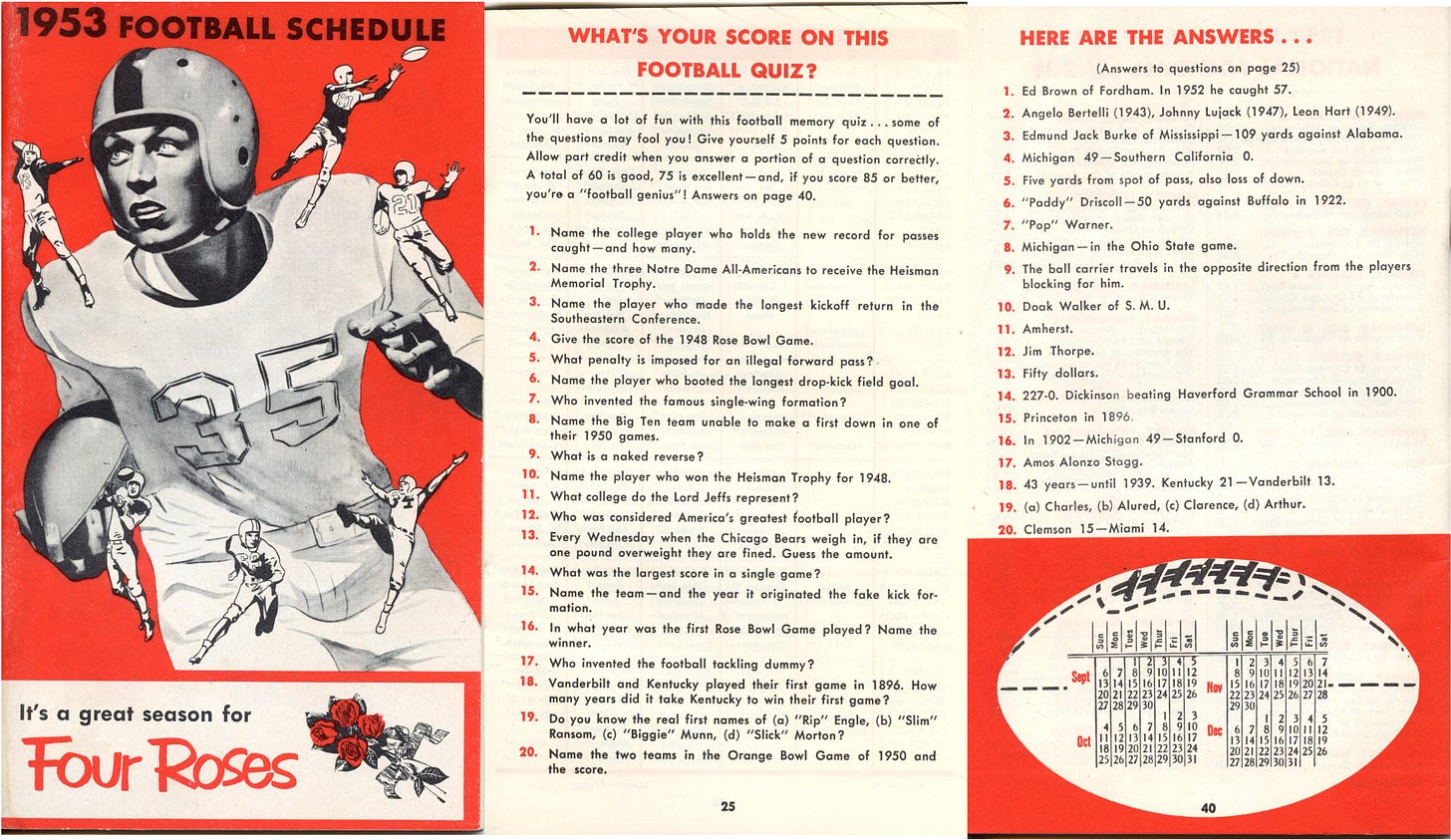

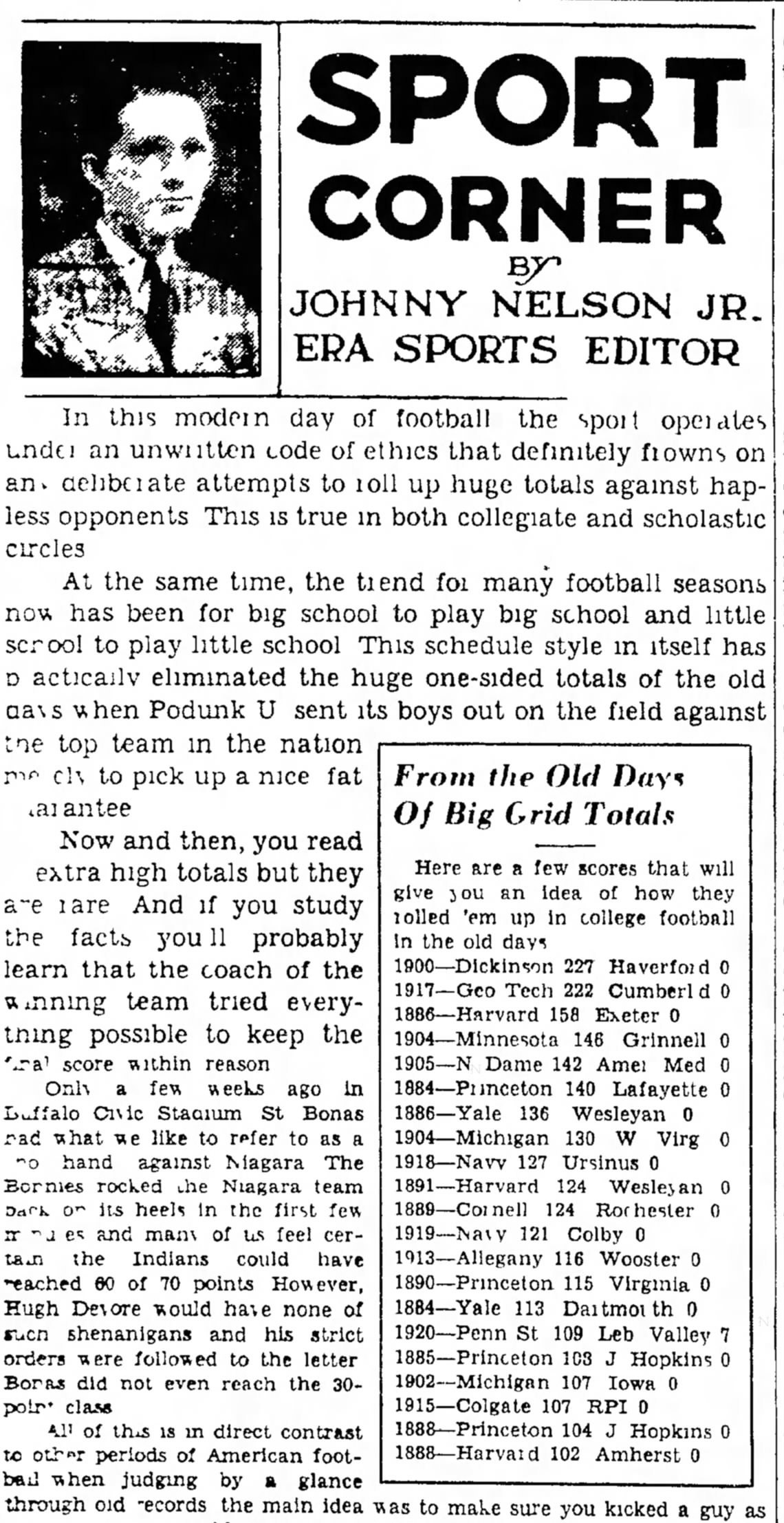

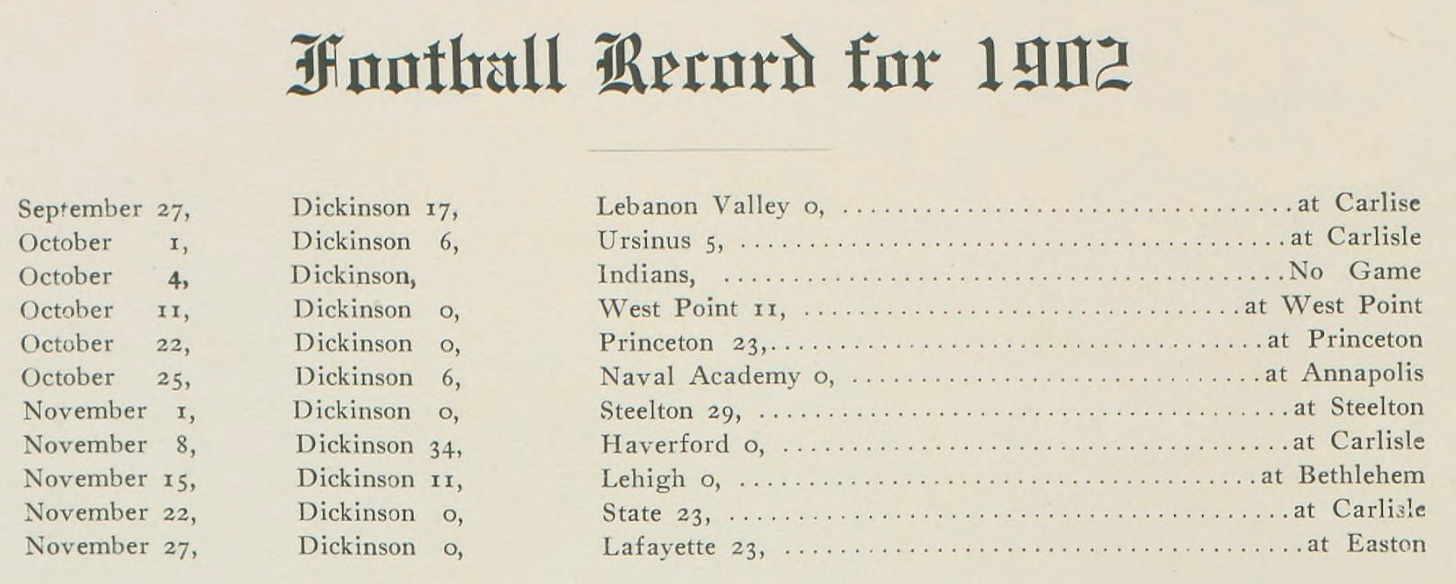
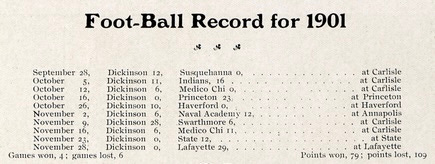
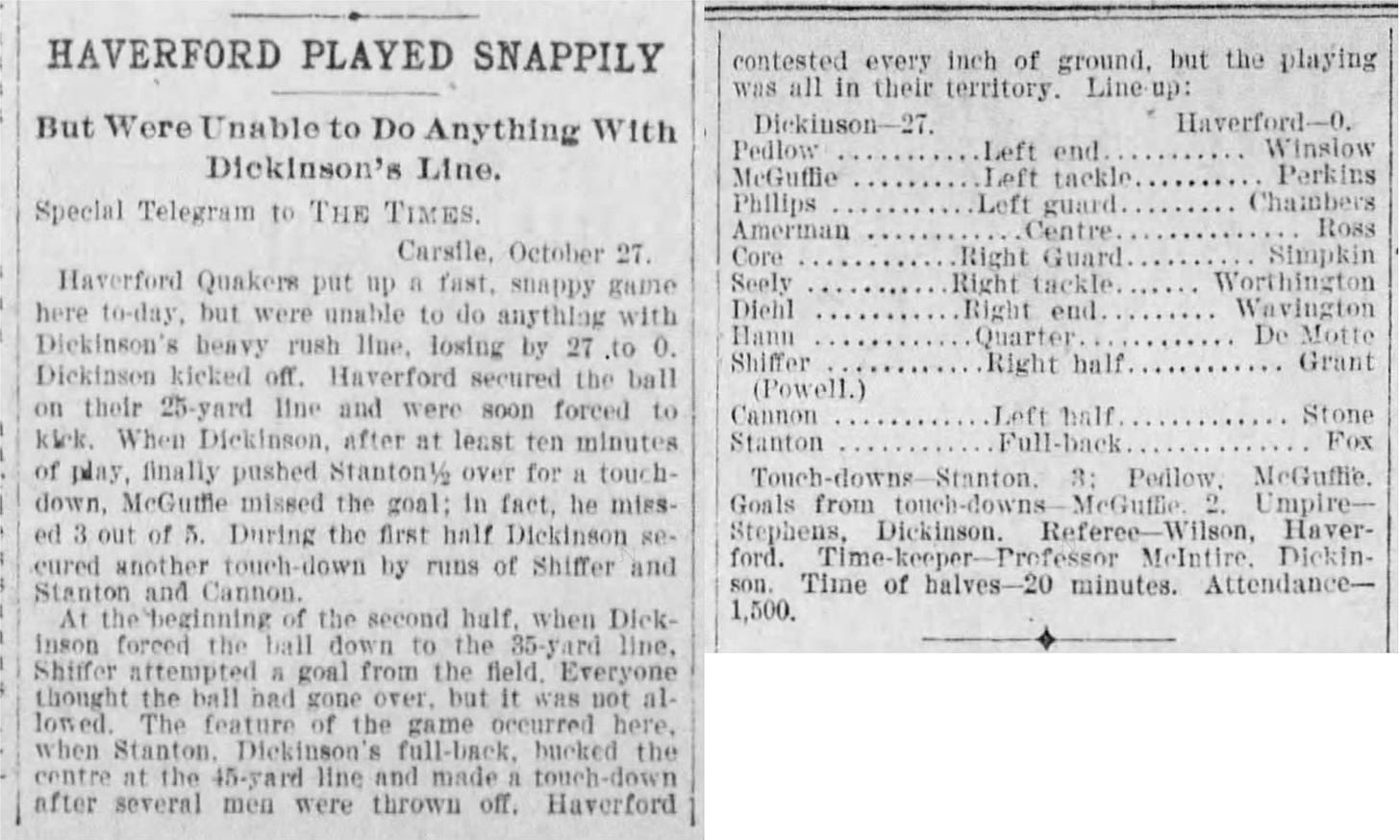
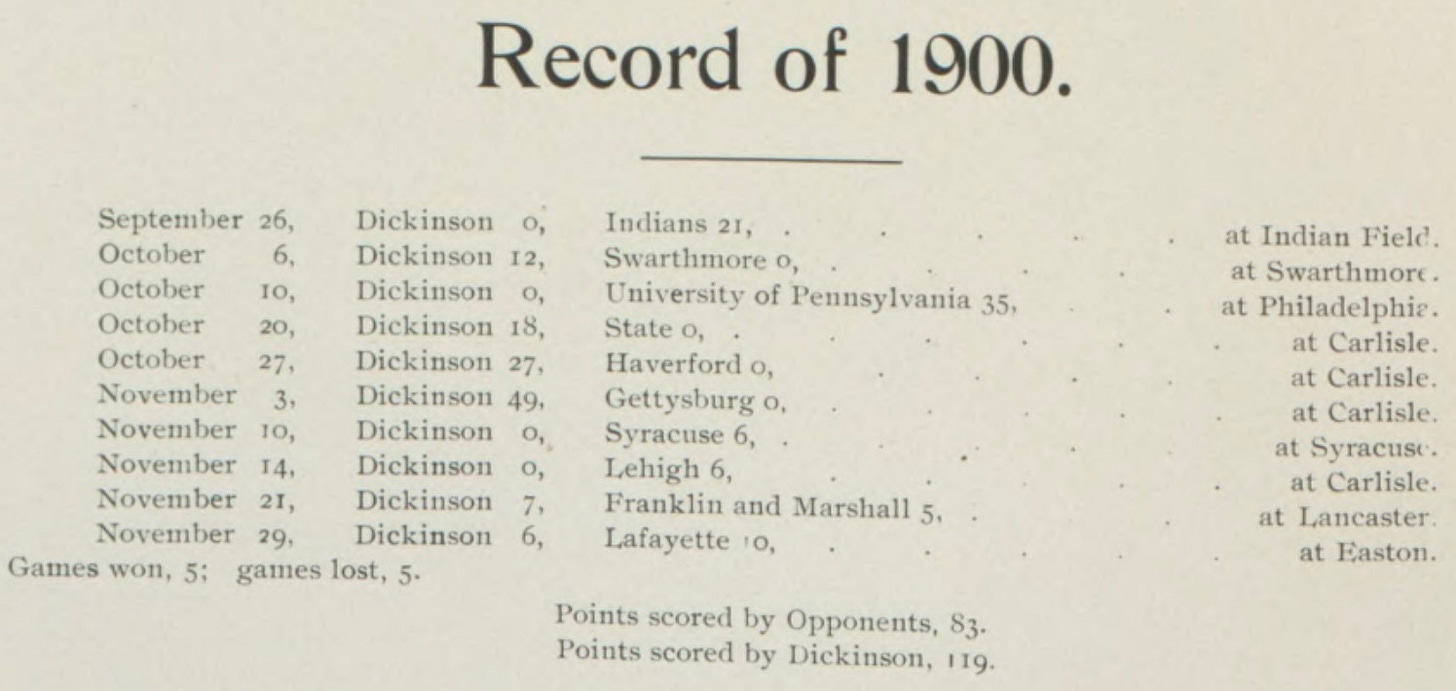
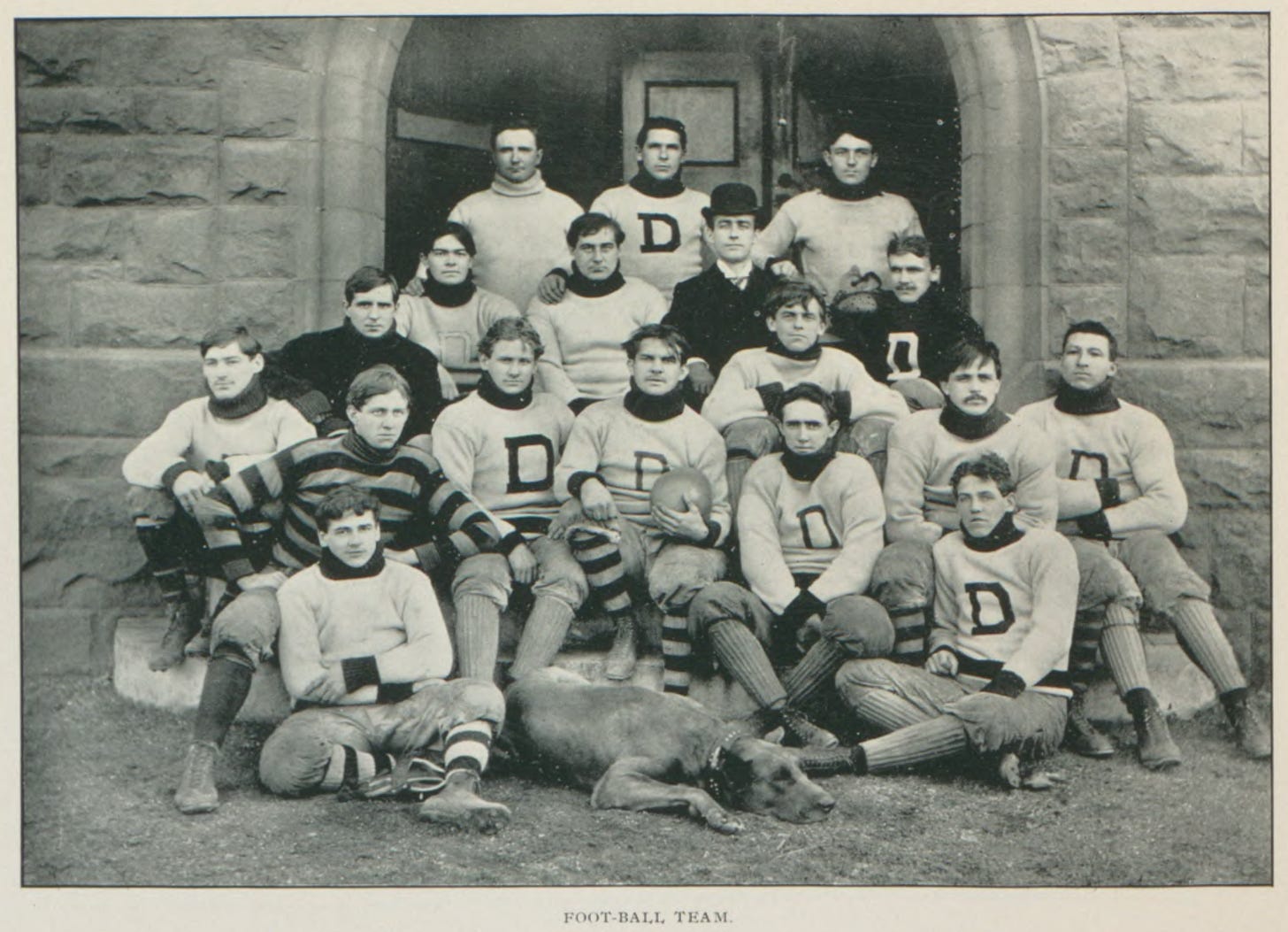
Tim,
Maybe you can do some research on my tax return, too? Could use a refund, haha.
Love the documentation of your investigation! Sherlock Brown solves yet another gridiron mystery. It is interesting that you once again weeded out the crabgrass and revealed the truth below. Great work